The Most Mind-Blowing Food Facts You Never Knew

Whether you consider food solely as fuel or you eat to taste every flavor and texture, everyone needs food to survive and carry out their daily tasks. In fact, every American eats about 1,996 pounds of food per year. How wild is that? Whether you crave Hershey's kisses or reach for a plate of carrots, here are 100 fun facts about food that might surprise you. And for more, don't miss these 15 Classic American Desserts That Deserve a Comeback.
Arachibutyrophobia is a real thing

Do you hate getting things stuck to the roof of your mouth? You're not alone; you might have arachibutyrophobia. Arachibutyrophobia is the fear of getting peanut butter stuck to the roof of your mouth and being choked.
But if you're a peanut butter lover, you'll want to check out these 30 Delicious Things You Can Make With a Jar of Peanut Butter.
There's a Spam museum

Even though Spam is a popular Hawaiian treat, the home of spam is in Minnesota. There's even a spam museum.
Pennsylvania is home to the "mushroom capital of the world"
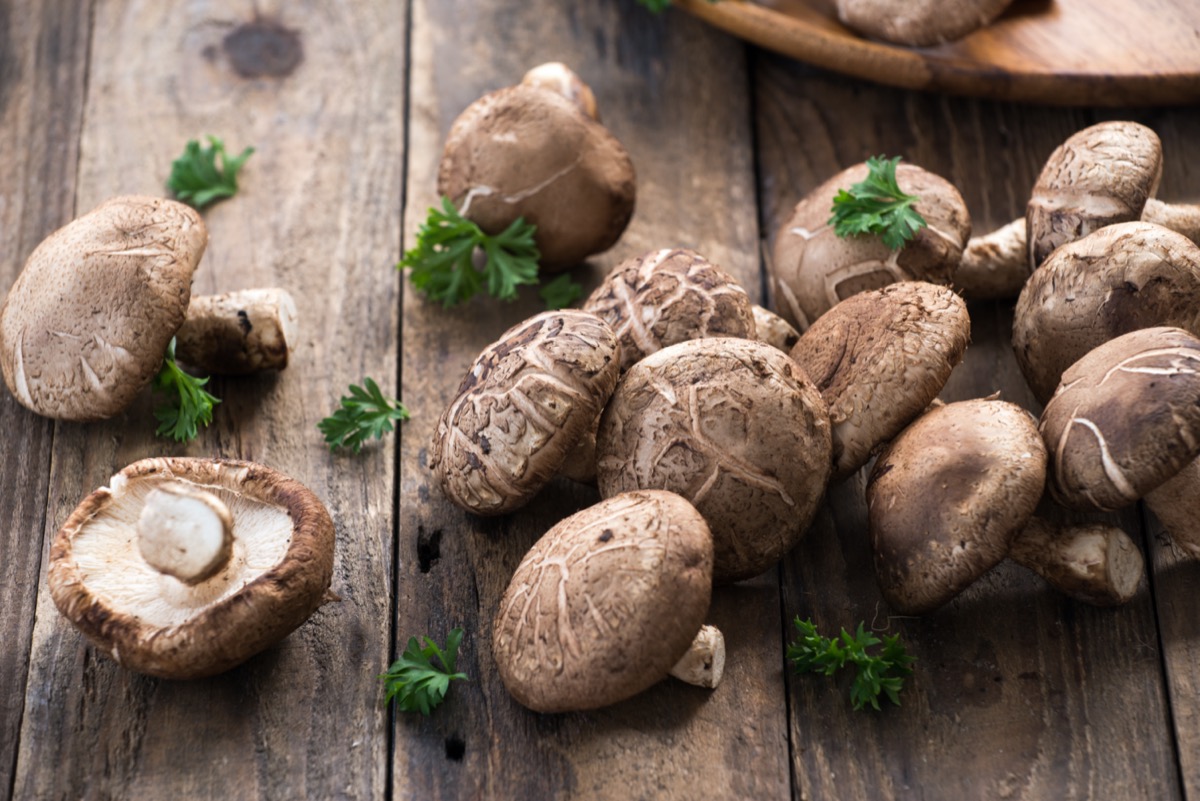
The "mushroom capital of the world" is located in Kennett Square, Pennsylvania. They are the largest exporters of mushrooms, followed by California.
Pound cake has a very good reason for its name

Pound cake is called pound cake because there was a pound of every ingredient in the original recipe.
Hot chocolate is older than you think

The Mayan and Aztec cultures were the first to make "hot chocolate." This precursor to hot chocolate was used for religious ceremonies, including coming-of-age celebrations and weddings.
Honey is regurgitated by bees

Honey is basically bee vomit. Some bees are "forager" bees, which collect nectar from flowering plants. The foragers drink the nectar and keep it in their "honey stomach." When the forager bee takes the nectar back to the hive, it regurgitates the nectar into the honey stomach of the "processor" bee near the entrance to the hive, which regurgitates it on the hive and allows it to ripen.
Sweet potatoes aren't yams

Yams and sweet potatoes are not the same things. Here's the difference between the two root veggies.
Now that you know the difference between them, put those sweet potatoes to good use with these 25 Healthy and Delicious Sweet Potato Recipes.
Carrots come in many colors

Although most carrots are orange, it turns out that it wasn't always that way. The original carrots were purple and yellow.
There's a reason students give apples to teachers

Ever curious as to why students have always gifted apples to teachers? It's because from the 16th to the 18th century, teachers' salaries were so low, students' families would compensate for that by providing them with apples, which were a common crop during this time period.
Put those apples to good use with these 19 Healthy Apple Recipes.
Bugs could be lurking in your food

Your favorite foods contain bug fragments! The FDA allows trace amount of bug parts in everyday items.
Wasabi isn't real wasabi

When you have wasabi with your sushi, it's not always real wasabi! Sometimes it's flavored horseradish.
Jelly beans are shiny because of shellac

Ever wonder what makes jelly beans shiny? It's the same thing that makes your gel manicure shiny: shellac. It will appear on your food label under the guise of "confectioner's glaze."
Nutmeg can cause hallucinations

Too much of a spice can be a bad thing, and nutmeg is no exception. If you have two or more teaspoons of the spice, it can actually cause hallucinations!
Cucumbers are mostly water

Next time you're feeling dehydrated and don't feel like drinking water, try snacking on a cucumber; it's 96 percent water.
Gelatin isn't vegetarian

Products with gelatin in them aren't exactly vegetarian or vegan-friendly. Why? Gelatin is made from boiling skin, cartilage, and bones from animals such as pigs, cows, and chickens.
If you don't mind its origins, though, amino-acid-rich gelatin makes Jello one of the 8 Best Post-Workout Snacks.
There's a reason lemons float

If you're making your daily lemon water, you'll notice that lemons float. They float because they have a similar density to water!
Almonds aren't nuts

Almonds are seeds, not nuts. According to the Plant Information Center, nuts are "a one-seeded, dry, indehiscent fruit with a hard pericarp, usually derived from a one-loculed ovary," but an almond is actually a "drupe." The Plant Information Center defines a drupe as "a fleshy fruit with a stony endocarp."
Peanuts are used to make dynamite (sort of)
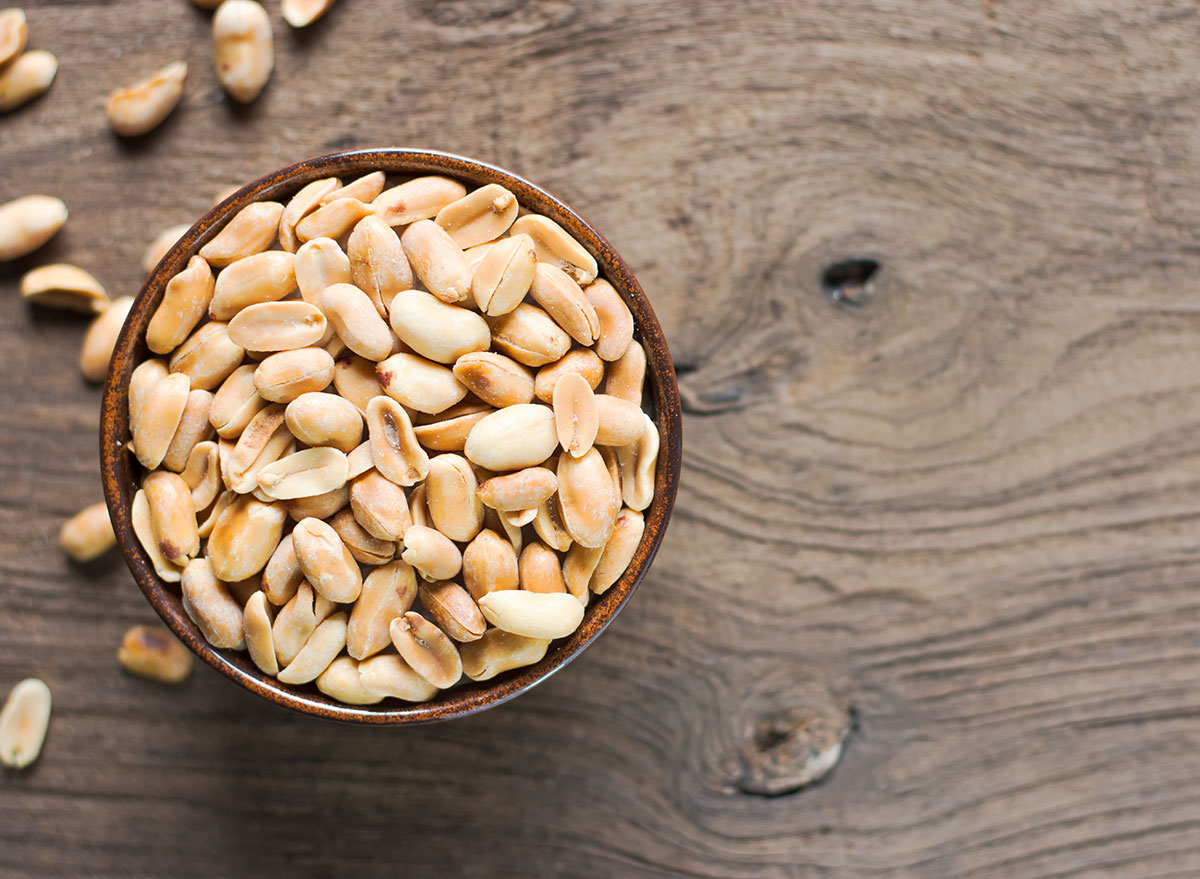
Peanuts are actually an ingredient in dynamite. They have oil in them called glycerol that's used to create nitroglycerin, a key ingredient in dynamite.
American cheese is really "cheese product"

American cheese has been available since the 1950s and was manufactured by James L. Kraft. But unlike real cheese, American cheese slices are actually a "pasteurized prepared cheese product." (In fact, that's why they are branded as "American singles" instead of "American cheese.") By the FDA definition, cheese products have at least 51% cheese—the rest is milk and additives.
Cranberries will bounce if they're fresh

You can make sure your cranberries are still good by throwing them on the counter and seeing if they bounce back to you.
Looking for more fresh-produce tips? Here are 27 Subtle Signs You Just Shouldn't Buy That Produce.
Olives were once a hot commodity

Documents in Syria imply that around 2,000 B.C.E., olive oil was five times more valuable than wine and two and a half times that of seed oils.
Balsamic vinegar isn't always the real deal

A majority of the balsamic vinegar sold in the United States isn't legit because it's not from "Modena" (yes, the Italian town from Master of None), even though labels might suggest it. Real Balsamic vinegar "must be aged for at least 12 or 25 years, and most importantly, it's made with Trebbiano grapes, thanks to the optimal climate conditions of the city, so it has a thick consistency."
Tea bags were created by accident

Although Brits are famous for their tea obsession, it was an American who ultimately revolutionized the leafy drink. New Yorker Thomas Sullivan is credited with creating tea bags. He would send samples of the product in silk bags and people started to throw them into the teapot. And, that's how tea bags came to be. The rest is history.
Vanilla flavoring has some scary ingredients
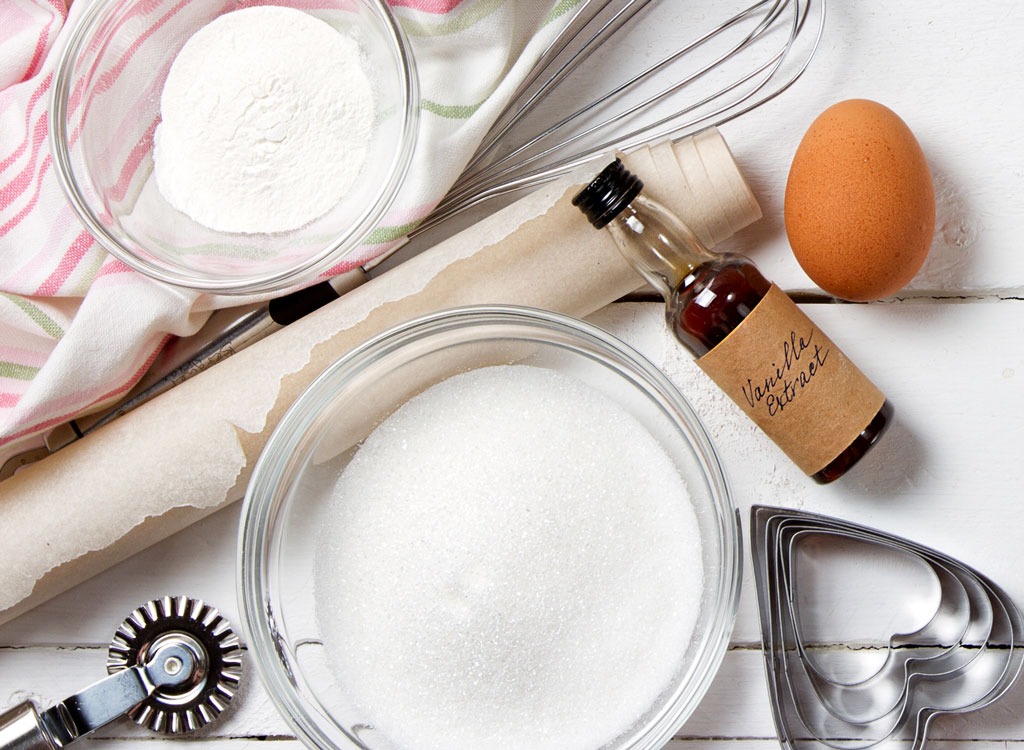
Be cautious next time you bake or buy something vanilla-flavored, because artificial vanilla contains castoreum, which is a product that comes from a gland in a beaver's butt.
Skittles get their color from an interesting source

Carmine is what gives red skittles or candies their ruby hue. Carmine is made with boiled, cochineal bugs, aka beetles.
And for more facts about food, don't miss these 33 Food "Facts" You've Always Believed But Aren't True.
Ranch dressing has a scary ingredient

Everyone's favorite store-bought salad dressing has a weird ingredient. Ranch, for example, contains titanium dioxide, which is what's used in sunscreen to give it its bright white color.
Froot Loops all taste the same

Although Froot Loops come in many colors, they're all, in fact, the same "froot flavor."
There's a $350 ice cream sundae in New York

The most expensive ice cream sundae can be found at Serendipity 3 in New York City. The sundae has Tahitian vanilla cream with a 23-karat gold leaf, almonds, caviar, and a sugar-encrusted orchid. It takes eight hours to make and comes in a $350 Baccarat crystal goblet (with more gold leaf) and an 18-karat gold spoon.
Pretzels were once a symbol of love

During the 17th century, pretzels came to symbolize undying love. According to lore, in 1614, a Swiss royal couple used a pretzel in their wedding to seal their bond, and some historians believe this is where the saying "tying the knot" came from.
Mageirocophobia is a real thing

Afraid of whipping up a meal? You might have mageirocophobia, also known as the fear of cooking. While it sounds super scary, it's fairly common.
Ketchup was once thought to be a great cure

During the 1830s, ketchup was said to have medicinal properties. People thought it would cure diarrhea, indigestion, jaundice, and rheumatism.
M&M's are named for a good reason

M&M's stands for Mars & Murrie, who created the famous candy.
Popsicles were invented by a child
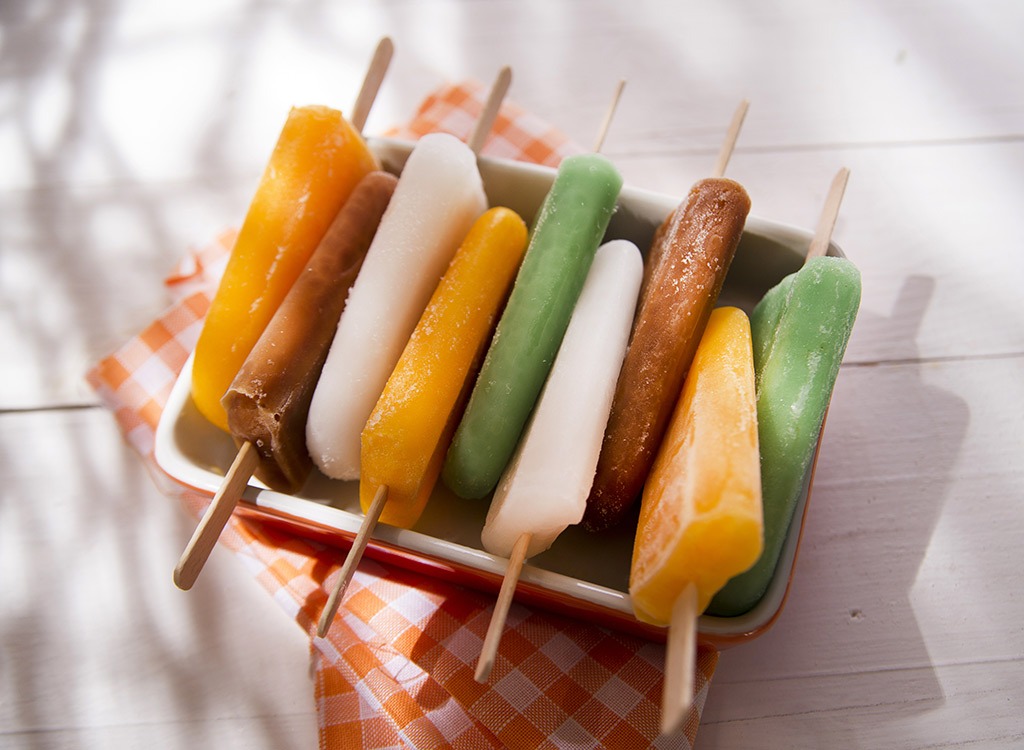
Popsicles were invented by 11-year-old Frank Epperson when he left a mixture of powdered soda, water, and a mixing stick out overnight in freezing temperatures.
Applesauce was the first food eaten in space

The first food to ever be consumed in space was applesauce. (No, it wasn't freeze-dried ice cream!)
Cotton candy was created by a dentist

Weirdly enough, cotton candy was invented in 1897 by a dentist. He partnered with a confectioner, and they created cotton candy, which at the time was called "fairy floss." Eventually, another dentist created a similar fairy floss machine in 1921 and called the confection "cotton candy," which stuck better than the previous name.
Unfortunately, cotton candy is likely one of the Things You Won't See at State Fairs This Summer.
White chocolate isn't real chocolate

Breaking news: White chocolate isn't really chocolate. White chocolate doesn't contain the dark chocolate cacao solids, which means it's not chocolate. It does, however, contain a ton of cocoa butter.
Tootsie Pops can take hundreds of licks to get to the center

Everyone knows that iconic commercial about how many licks it takes to get to the center of a Tootsie Pop. The truth is that it can take anywhere from 144-411 licks to get to the center.
"Pez" is short for a German word

The name of Pez candy from the German word for peppermint, "pfefferminz." Pez originally marketed them as an anti-smoking device. In fact, there 1920s slogan was "smoking prohibited, PEZing allowed."
3 Musketeers originally had Neapolitan flavors

This candy was originally called this because they have pieces of vanilla, strawberry, and chocolate candy in them! During World War II, due to rations, they converted it to just chocolate.
Yubari King cantaloupes are REALLY expensive
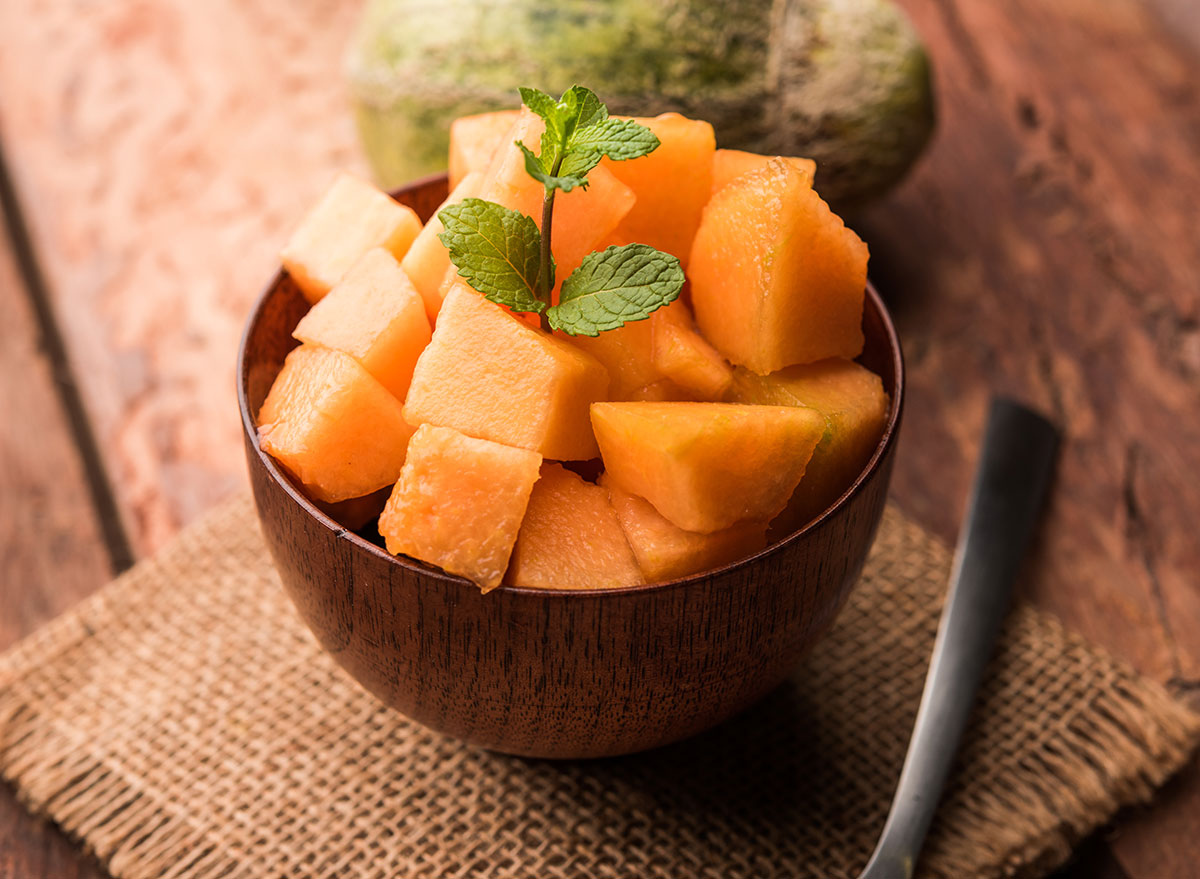
The Yubari King cantaloupe is the most expensive fruit in the entire world. They have been auctioned off for as much as $27,295.
Pomegranate seeds vary

A pomegranate can actually have any number of seeds.
Apples can stay fresh for a LONG time

Some apples you buy in the supermarket can be more than a year old! They're still fresh because they were held in cold storage.
Carrots can turn your skin orange

Sadly, carrots do not really improve your night vision, but if you have too many carrots, your skin can turn orange. (Yes, it's just like that Magic School Bus episode.)
Potatoes were planted in space

Potatoes were the first vegetables ever planted in space. They were first brought into space in October 1995 while aboard the Space Shuttle Columbia in its Microgravity Astroculture Laboratory.
Radishes were once used as a form of payment

In ancient Egypt, radishes, as well as onions and garlic, were given to workers as wages. These were provided to workers because they helped with infectious diseases.
Asparagus goes bad pretty quickly
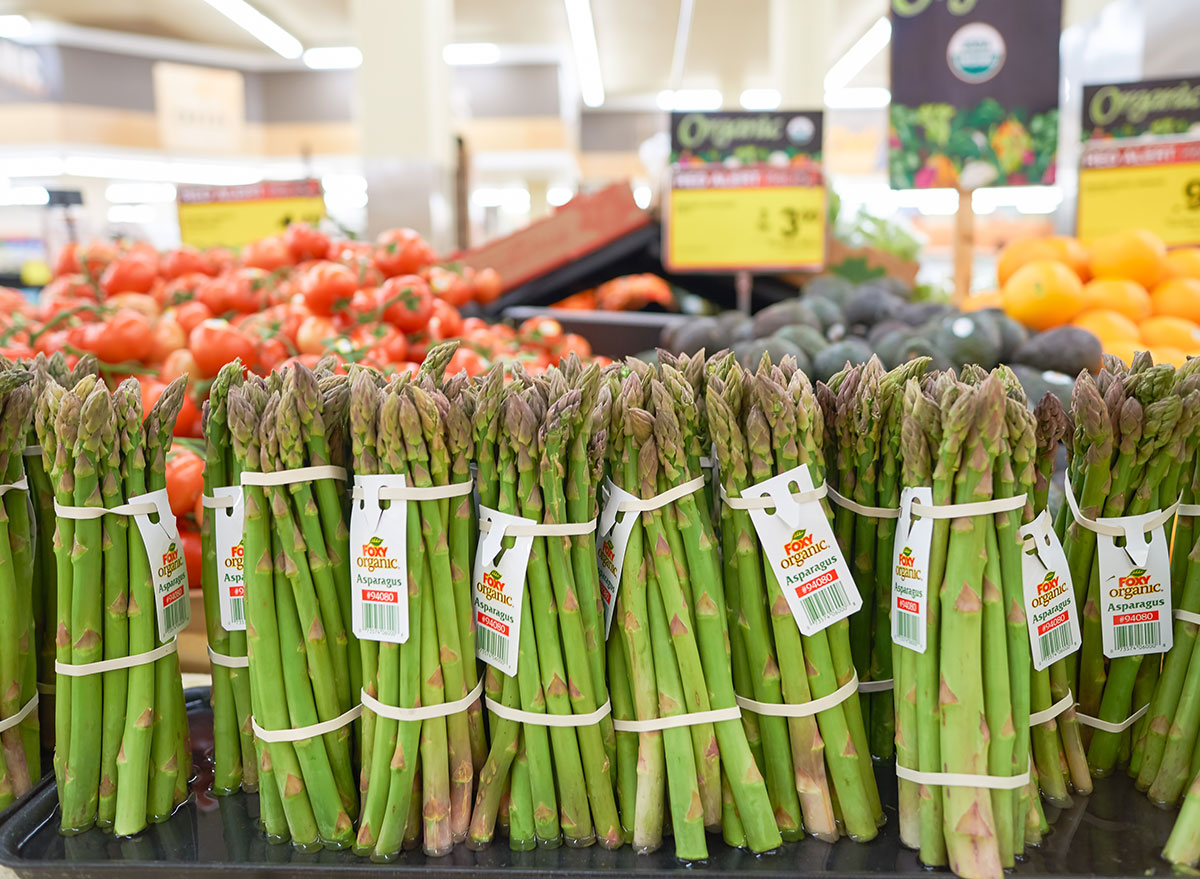
Asparagus loses its flavor the quickest out of any vegetable; therefore, it's best to eat it the day of purchase.
Hershey's Kisses could have been covered in caramel

Before Milton Hershey created his famous Hershey chocolate, he owned the Lancaster Caramel Company. He started to coat his caramels in chocolate, and the rest is history.
Pufferfish can be dangerous

Pufferfish is a delicacy in Japan, despite the tetrodotoxin it has in it. If the fish isn't prepared correctly, it can easily kill the enamored eater. Because it's so dangerous, chefs are required to train two-plus years and then take an extremely challenging exam (which a third of applicants fail) before they can cook it.
French fries aren't from France
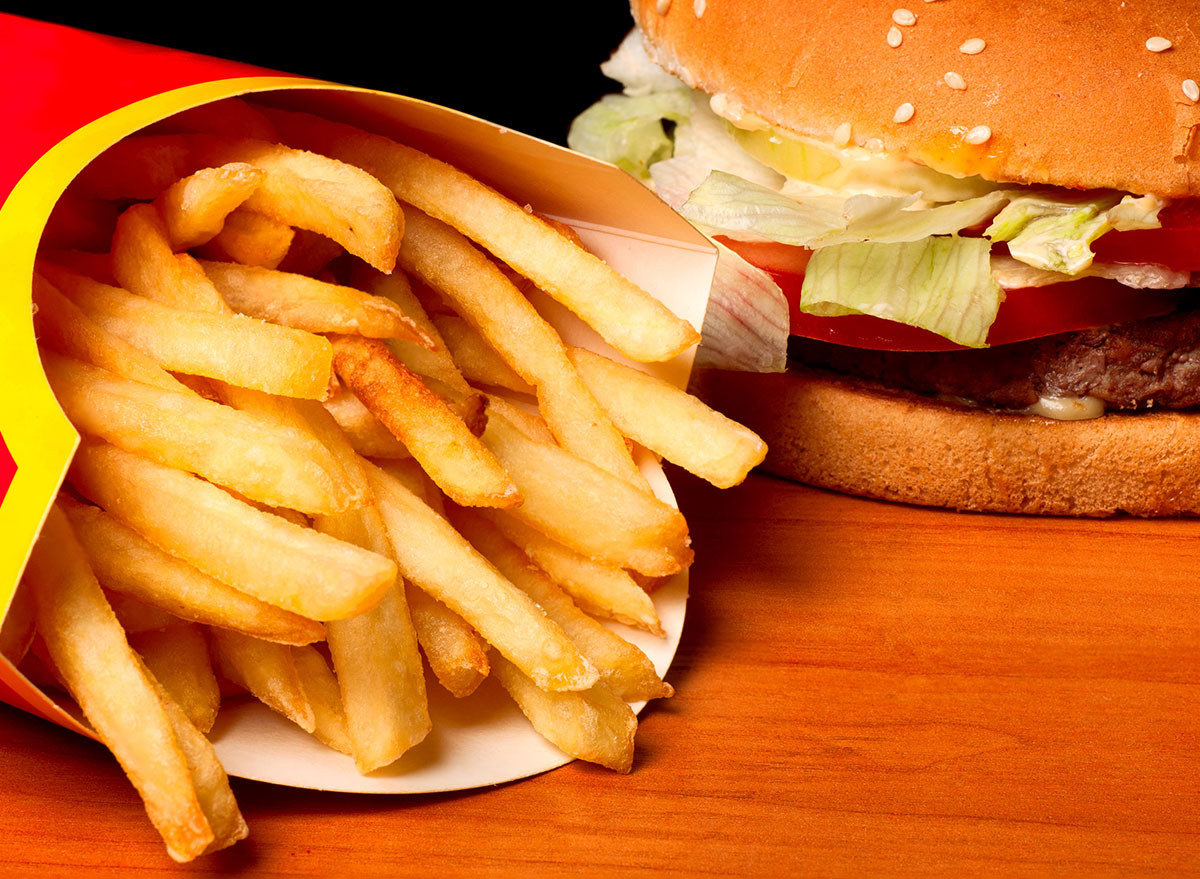
French fries were actually created in Belgium, not France! They are called French fries because of how they are prepared; they're julienned.
Gum originally included birch bark

The first gum was from Europe more than 9,00 years ago, but it was a far cry from the gum we know and love today. People were originally chewing birch bark!
And if you love gum, here are The 25 Best and Worst Chewing Gums.
Twinkie cream isn't really cream
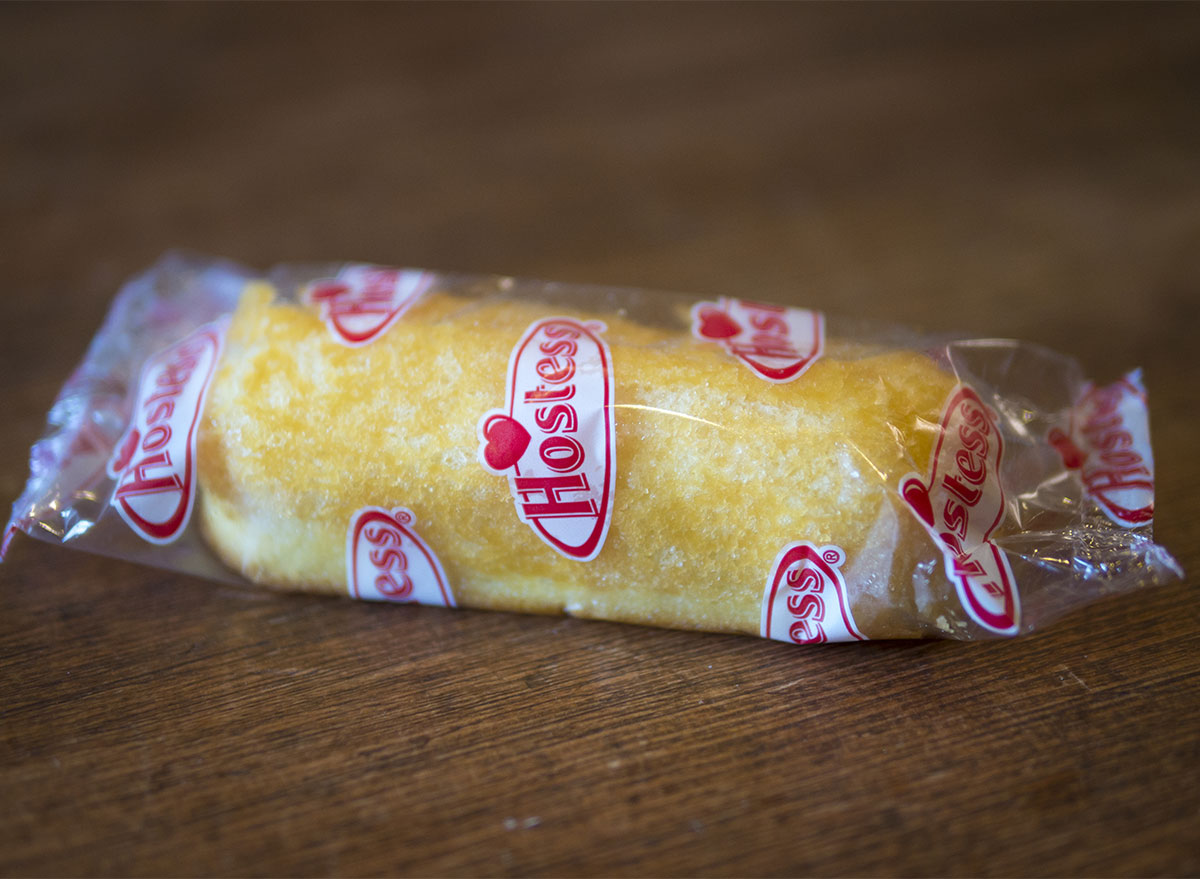
The cream in the middle of a Twinkie isn't cream at all. In fact, it's mostly vegetable shortening. Also, note that a single Twinkie has 37 ingredients!
Oreos used to have a different name

Oreos were originally called "Oreo Biscuits" when they were first produced. The oreo cookie we know and love today comes in countless flavors, but when these cookies made their debut, they launched the original chocolate cookies and a lemon meringue flavor.
Seaweed is used to make dairy products

Even if you don't order nori, you're still enjoying some seaweed in your food. Carrageenan (a type of seaweed) is commonly used as a thickening and emulsifying agent in dairy and non-dairy products, such as chocolate milk, cheese, ice cream and cottage cheese.
"Dorito" is a Spanish word

The word Dorito means "little golden things" in Spanish.
Honey Nut Cheerios changed recipes over time

Do you see any nuts in Honey Nut Cheerios? Neither do we. The current recipe is actually a change from the original 1979 formulation. The first recipe contained real ground almonds until 2006, but the nuts were replaced with "natural almond flavor."
And if that doesn't sound appetizing, here are the 10 Best Healthy Cereals.
Pumpkin pie is hundreds of years old

The holiday favorite was introduced at the second Thanksgiving in 1623.
Lollipops have plenty of history, too
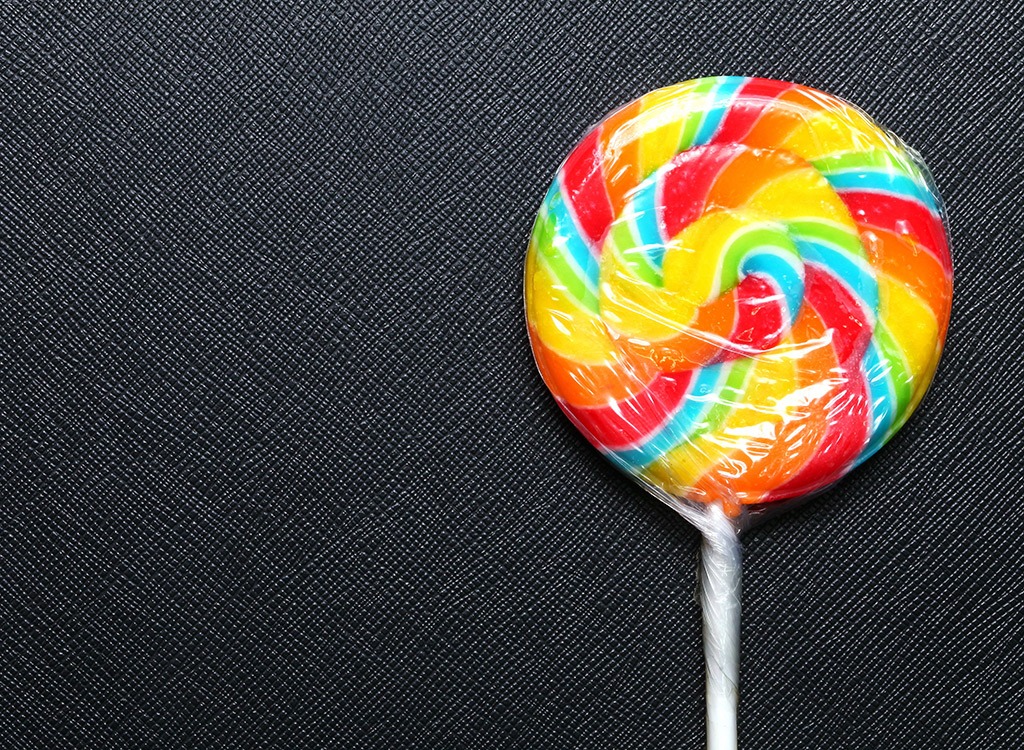
Lollipops have been around thousands of years! Rumor has it that cavemen invented them by collecting honey from beehives with a stick and licked the stick to eat them.
Figs are made by wasps

Figs are made by fig wasps which mate inside the fig, leaving it to blossom.
Bell pepper lobes mean something

Bell peppers have different amounts of lobes, which can help determine their use. Four lobes are sweeter and are best raw, while peppers with three lobes are best cooked.
Corn can be used in pretty much anything

Corn is one of the most versatile crops out there. In fact, there are more than 4,000 different uses for corn. It can be found in anything from your pet's food to fireworks.
We recommend using corn in these 20 Corn Recipes That Crush It.
Canned white tuna has a high mercury content

Canned white tuna has three time mores mercury than chunk light.
Decaf coffee isn't truly decaf

Most decaf coffee still has some caffeine.
Oranges often have the same number of pieces

When it comes to eating an orange, there are usually 10 segments in one fruit!
Blueberries used to have a different name
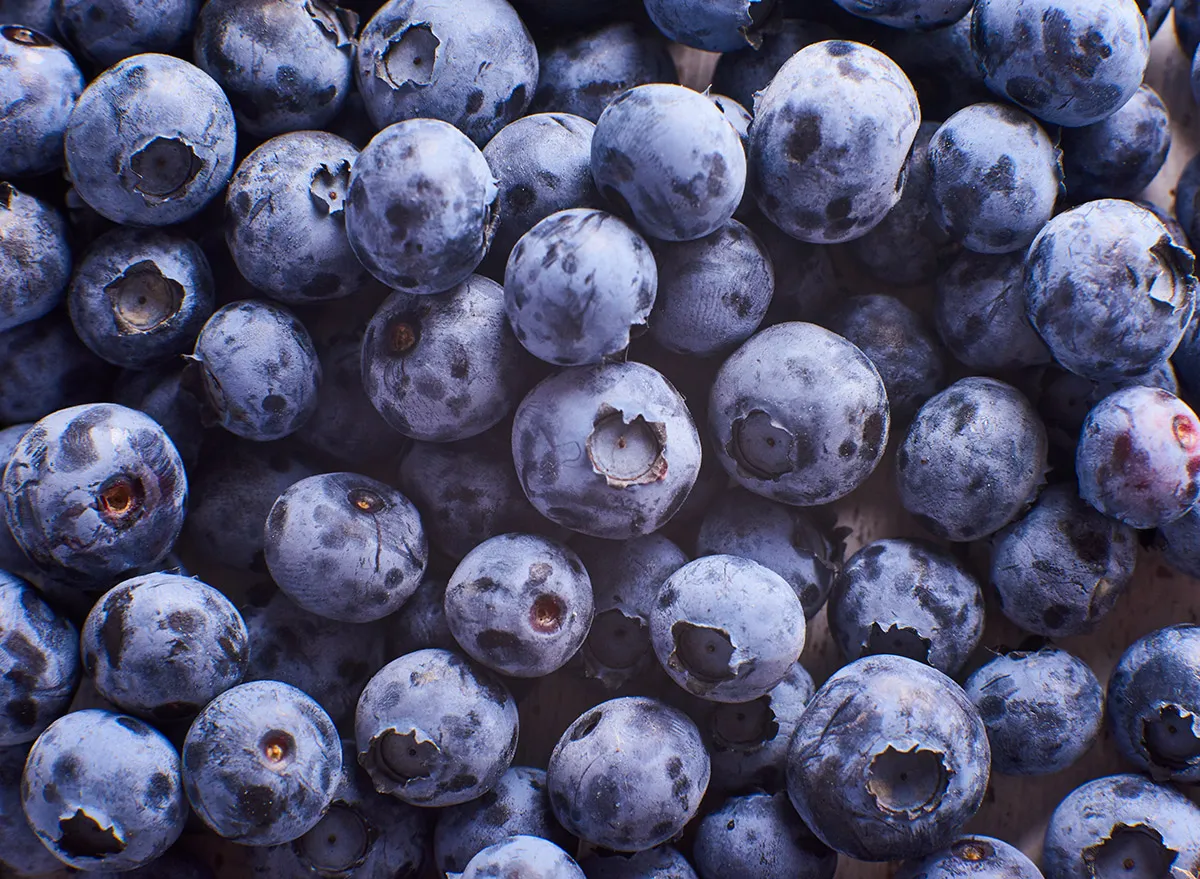
Blueberries were called "star berries" by Native Americans because the blossom at the end of the berries looks like a five-pointed star.
Leeks have an ancient backstory

Leeks were a favorite of the Roman emperor Nero because he believed they helped strengthen his voice.
Put those leeks to good use in this Vegetable Frittata Recipe.
Strawberries aren't technically berries
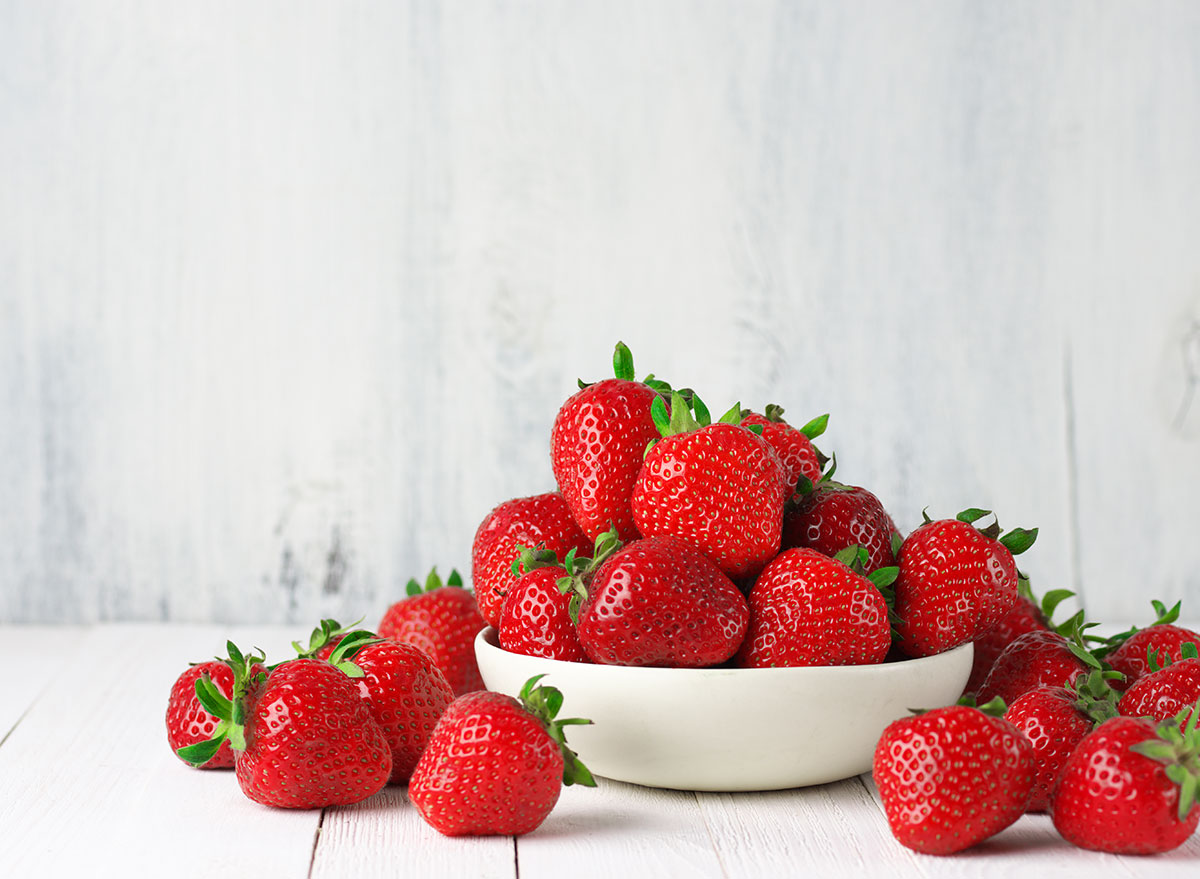
Strawberries aren't true berries because berries only have seeds on the inside, and strawberry seeds are on the outside.
Pineapples were named for their appearance

When early explorers saw pineapples, they thought they looked like pine cones, which is how the tropical fruit got its name.
Mango inspired a fabric pattern

The popular paisley pattern is actually based on the mango!
Ice cream has ancient roots

Ice cream has been around for a very long time. In the fifth century B.C.E., the Greeks enjoyed a dish similar to ice cream, and from there the love of ice cream grew.
Chocolate chip cookies were created by accident

According to legend, the chocolate chip cookie has a ton of origin stories. Some say that Ruth Wakefield (the creator) unexpectedly ran out of nuts for ice cream cookies and used chunks of chocolate instead. Another theory is that chocolate chunks fell into the industrial mixer, but neither of these rumors is confirmed to be true.
However they were invented, you can't go wrong with these 25 Best Chocolate Chip Cookie Recipes on the Internet.
Wedding cakes were once savory

The first wedding cake was actually savory. Records of wedding cakes go back to ancient Rome when a groom sealed his marriage by smashing a barley cake over the bride's head.
Margherita pizza was named for a queen
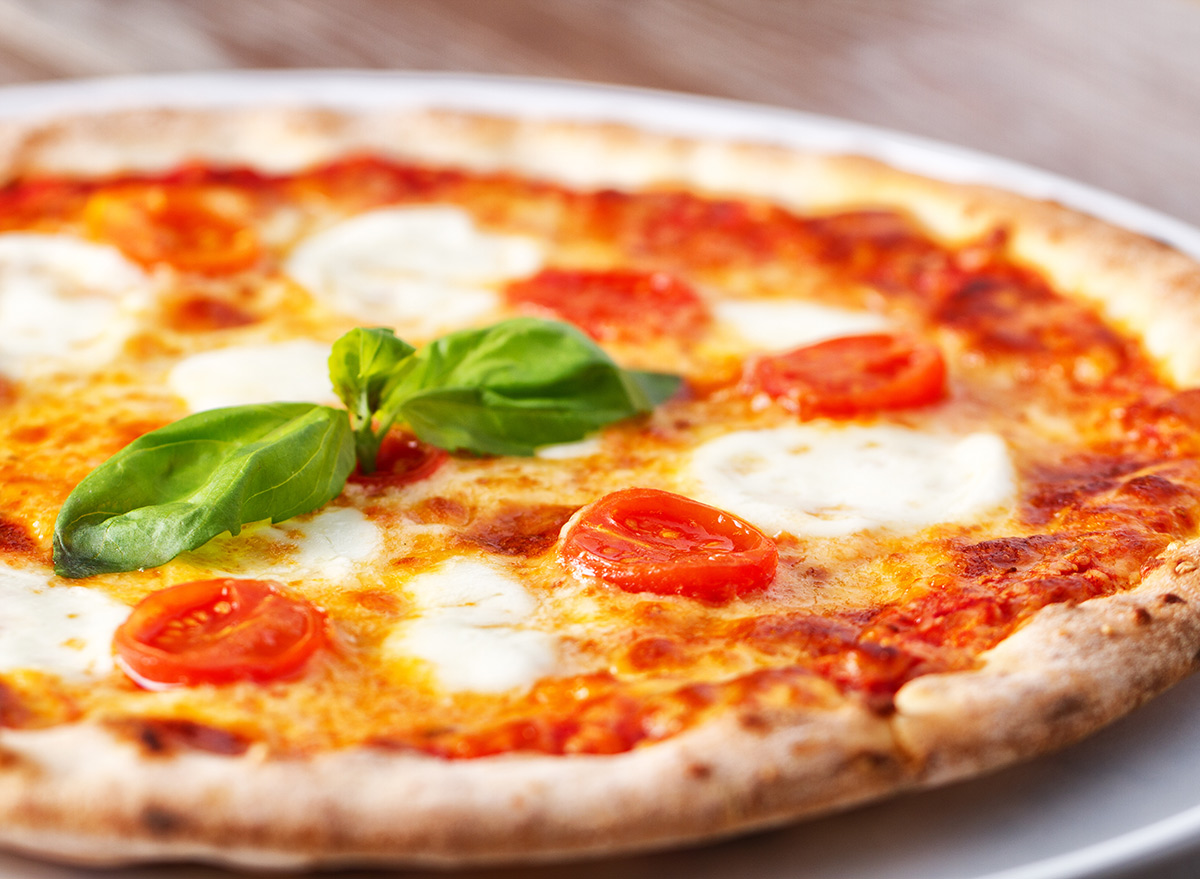
King Umberto I and Queen Margherita visited Naples in 1889, as the story goes. They got bored of the fancy food and asked for pizza, which was a food for the poor. The queen loved the "pizza mozzarella," a pie topped with soft white cheese, tomatoes, and basil. From then on, that combo became known as Margherita.
Thomas Jefferson is responsible for your love of pasta

Thomas Jefferson is credited with making pasta popular in America. He brought over the first macaroni machine to the USA after spending time in Paris. He even created the design himself. He also was the first person to introduce mac and cheese to Americans.
Pasta has ancient roots, too

Pasta goes all the way back to the Etruscan civilization (between the third and eighth centuries B.C.E.). Their "pasta" was made by grinding cereals, grains, and some water.
There's a trick to revive stale bread

If your bread goes stale, there are two easy ways to revive it. One is to run it underwater, and the other way is to heat it in the oven at 300-325 degrees Fahrenheit for six to seven minutes.
Want to make your own bread recipes at home? Here are 3 Sourdough Bread Recipes You'll Love.
Edible oysters don't have pearls

The oysters you eat are a different species from the ones that bear pearls. The kind that are eaten are called ostreids, and the pearl-producing oysters are called Pterioida.
Lobsters were once a common food

Once upon a time, lobsters were served as prison food and regarded as food for the poor because they were so plentiful.
Broccoli is here because of Thomas Jefferson, too

Thomas Jefferson was quite the gardener. He introduced pasta to the U.S. as well as broccoli and other vegetables from France.
Peas are some of the freshest frozen vegetables out there

Frozen peas are frozen within two and half hours of harvest.
Green beans are covered in tiny hair

Green beans have tiny hairs on them that can trap bugs.
Try out the veggie in one of these 17 Healthy Green Bean Recipes.
Limes were once thought to cure scurvy

Limes were one of the cures for scurvy, a disease caused by vitamin C deficiency. Although lemons and oranges were the original vitamin C-rich fruits to cure the disease, doctors thought lime juice would be a more effective cure, as they have more acid than lemon juice does.
Cauliflower comes in four colors

Cauliflower isn't just white. The veggie comes in four different colors, including orange and purple. The next time you're shopping, pick one of the colorful cauliflowers to enjoy additional nutrients and benefits.
Lima beans contain cyanide

Raw lima beans contain a large amount of cyanide, which is lethal to humans; however, the beans are safe to eat as long as they are thoroughly cooked.
Rhubarb leaves aren't safe to eat

Rhubarb isn't toxic, but its leaves are. They contain oxalic acid, which can lead to stomach and kidney issues.
Cashews aren't nuts

Contrary to popular belief, cashews aren't nuts; they're actually seeds. They can also be toxic due to anacardic acid, which can cause some damage to your body.
Try using cashews in this Blackberry Chia Pudding Recipe.
Chili pepper flesh is the hottest part of the plant

The hottest part of the chili pepper is not the seeds, but the flesh.
Kiwi is healthy for more reasons than one

Eating kiwi helps your body process protein.
Parsley will get rid of onion breath

No one likes onion breath. How can you get rid of it? Have a bite of some parsley.
Eggplants aren't vegetables

Eggplants aren't vegetables; they're actually berries. However they're classified, they're great in any of these 21 Delicious Eggplant Recipes.
Bananas are clones

The Cavendish banana is seedless and can't reproduce, so every banana is a clone.
Papaya allergies and latex allergies go hand-in-hand

If you have a latex allergy, you are likely allergic to papaya.
There are more pear varieties than you think

There are more than 3,000 varieties of pears in the world, and America produces 84% of them.
Greek yogurt is high in protein

Most Greek yogurt has double the amount of protein as its regular counterpart.
Coconuts are from the Pacific

Coconuts originated in the areas near the Pacific and Indian Oceans. The Pacific coconuts likely were cultivated in the Philippines, Malaysia, and Indonesia, whereas the Indian ones were cultivated in Sri Lanka, the Maldives, and the Laccadives.
Watermelon is Oklahoma's official state vegetable (not fruit)

Watermelon is the official vegetable of Oklahoma. Yes, Oklahomans consider the watermelon to be a vegetable (another fun fact: it's part of the cucumber family), but if you ask a botanist, they'll tell you the summer produce is a fruit.
Whatever you call a watermelon, it's delicious in these 25 Watermelon Recipes.
Chickpeas have many names

Chickpeas, garbanzo beans, sanagalu, Ceci beans, chana, and Bengal gram are all the same thing. Not only do chickpeas have a ton of names, but they also come in a variety of colors, such as red, black, brown, and pale yellow.
Oats are used to make a lot of other foods

Oatmeal is commonly used as a stabilizer in food items such as ice cream.
Sugar is good for more than just food

If you add sugar to a vase of freshly-cut flowers, it can help prolong their life.
There's a world record for the largest tomato

The heaviest tomato in the world weighed 8.61 pounds and was grown in Washington State.
Soda contains some scary chemicals

Some sodas use an ingredient called sodium benzoate, which can react with the acid in soda to create benzene: a compound that has been associated with cancer.
And when you're cooking at home, don't miss these 52 Life-Changing Kitchen Hacks That'll Make You Enjoy Cooking Again.








